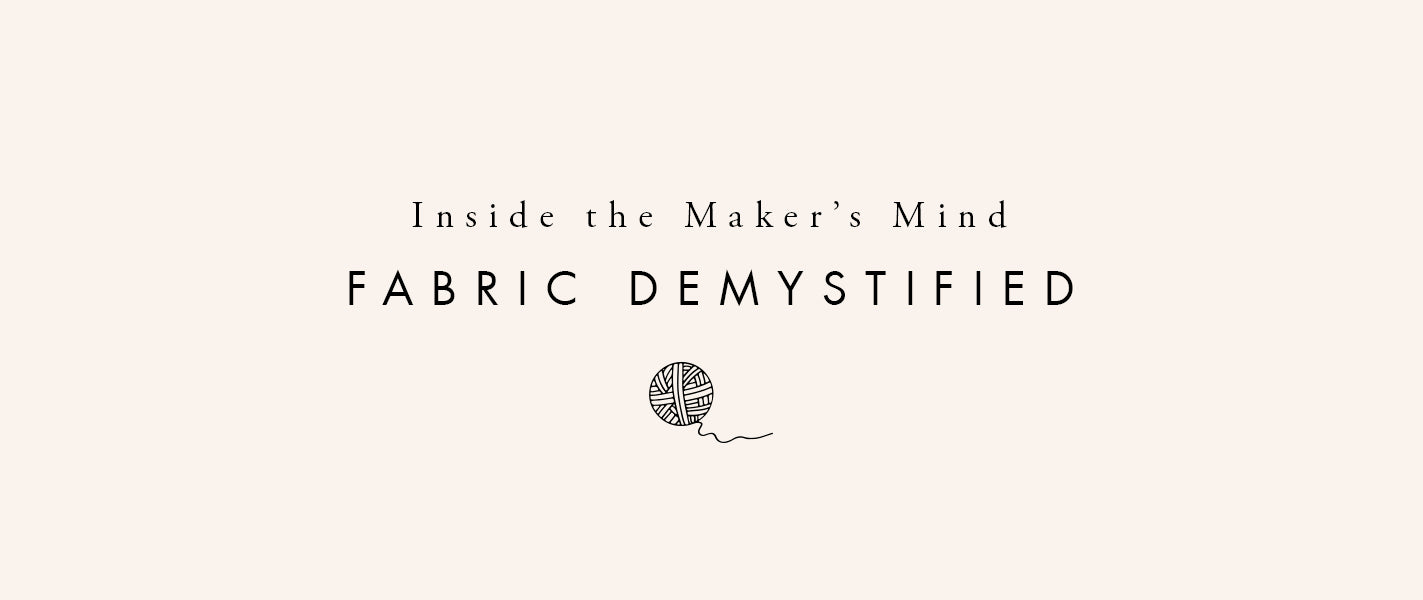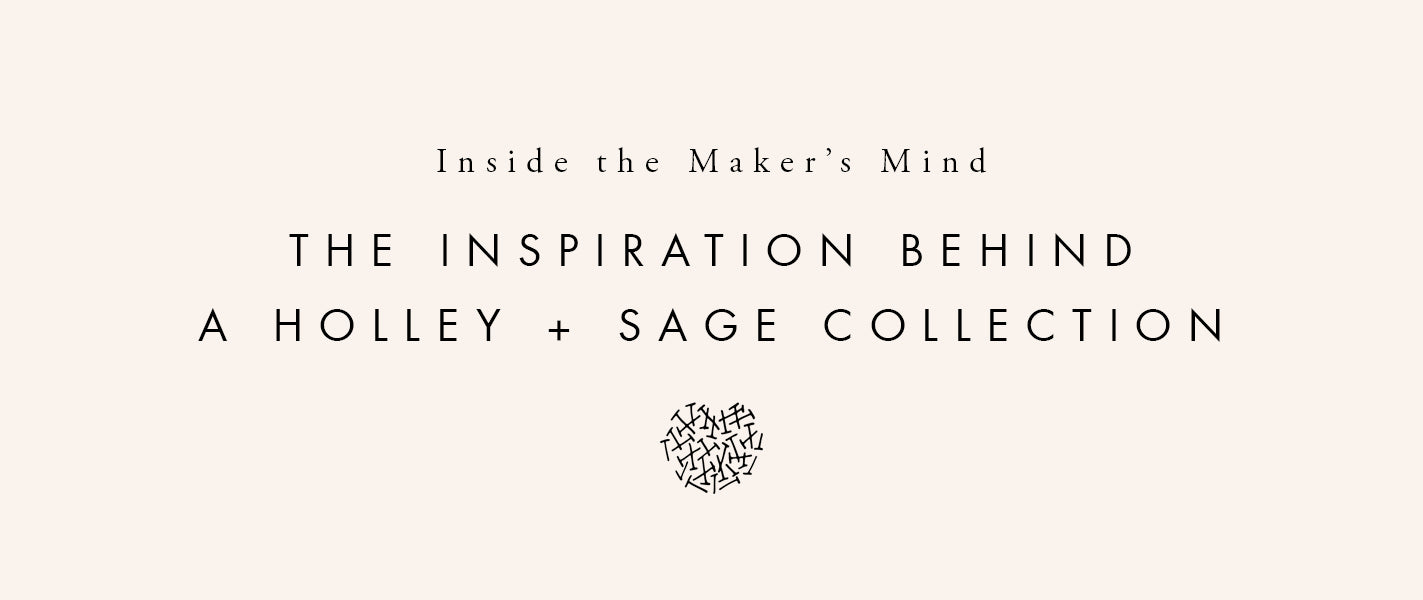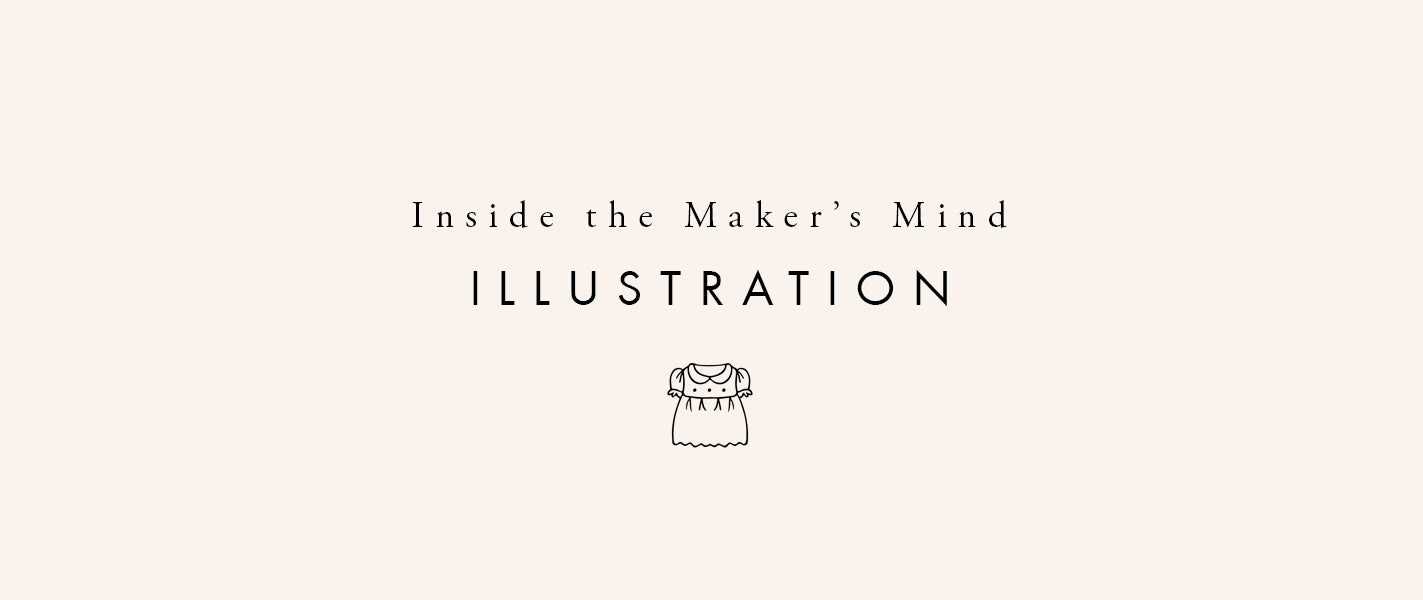
Inside the Maker’s Mind | Part 2 - Fabrics Demystified
Let’s talk about fabrics shall we…
The next step in my design process, after inspiration, is fabric selection. Fabrics are the MOST important aspect of my collections. I believe my knowledge of textiles, my eye for fabrics and my attention to detail when it comes to fabric selection is what sets Holley + Sage apart from anybody else. I don’t mean to toot my own horn but I know fabric. I’ve studied fabric and textiles, taken science classes and labs on textile make up and construction and I continue to educate myself in the world of textiles.
Let’s not get carried away, there are many people that know more about textiles than me, but when it comes to the world of handmade children’s clothing, I consider myself and my brand a knowledgeable source. I honestly have a passion for this. Even writing this article is stirring up a fire in my heart. I know I sound crazy but I wanted to take you inside my mind, so welcome!

“is this a cotton or a knit”
One of my pet peeves is when people ask “is this a cotton or a knit?” If you’ve done this, do not feel bad! This question is asked everyday, all over the world. I am here to set the record straight and teach you the ways!
Here we go! Are you ready to have your mind blown?!
Cotton is a fiber, not a type of fabric. Cotton is spun into a yarn that is then woven into a fabric. Other examples of fiber content are polyester, rayon, wool, silk.
Fabrics are categorized and named based on two main things
- The fiber content and yarn type
example: fiber content - cotton, yarn type - spun
example: fiber content – polyester, yarn type – filament
- The yarn construction (how individual yarns make an actual fabric)
There are many types of yarn construction but the main two categories in handmade childrenswear, and most clothing, are WOVEN and KNIT
So what’s a woven?
A woven fabric, in the simplest terms, is when the individual yarns are woven together. Essentially, a woven fabric has horizontal yarns and vertical yarns that are overlapped to create a weave. These horizontal and vertical yarns are called the warp and weft. You don’t need to know that but just thought I’d put it out there for anyone who has heard those terms and had no idea what they meant. There are many different ways that these warp and weft yarns can be woven and that is what creates the million different types of woven fabrics.
Examples of woven fabrics are – voile, satin, denim, muslin, lawn, brocade

So what’s a knit?
A knit fabric is formed when the yarns are looped, not woven. Because of this looping construction, knit fabrics are able to stretch and pull both horizontally and vertically. That’s why they are used for socks, leggings, form fitting t-shirts, etc. Because of their stretch, they can contour to the body.

But wait, if denim is a type of woven fabric, why do I have denim pants that stretch?!
If a woven fabric uses a YARN that stretches then it will be able to stretch in the direction of the yarn. If it’s used horizontally – the fabric will stretch horizontally and visa versa.
Can I have a summary?
So instead of asking, “is this a cotton or a knit,” you should ask, “is this a woven or a knit?” Cotton is a fiber, not a type of fabric. You can have cotton wovens, as well as, cotton knits.
Holley + Sage Fabrics
So now that we have that out of the way, I can explain the types of fabrics I use and look for with each collection. I mostly use woven fabrics that are made of 100% cotton. I make a lot of dresses and rompers that need to maintain their shape. Since 100% cotton woven fabrics don’t stretch, they are perfect for these garments. I also like using cotton because it is a natural fiber that is spun making it more breathable than synthetic fibers like polyester and rayon. Another reason I choose cotton 90% of the time is because it is easy to clean – no need to dry clean. This goes back to my little brand phrase “designed to cherish | made for play” I want to design beautiful, unique clothing, but also clothing that can be worn everyday and can stand up to the child play test.
The types of woven fabrics that you will see time and time again in a Holley + Sage collection are voiles, lawns and chambrays. These fabrics are soft to the touch and comfortable. I try to only select stripes, dots or plaids that are yarn dyed. This means the yarn is dyed the color before it is woven into a fabric as opposed to being printed on the completed fabric. This allows for a more dynamic, textured design. It is also higher quality and less likely to fade.
The below image is a page of my sketchbook, where I gather fabric swatches during my design process.
In my collection, out now (shop here), I chose a selection of different fabrics that I sourced in New York City and from some of my favorite fabric vendors. The everyday garments, the rompers, tops and leggings, are made with mostly cotton wovens and knits. They can be machine washed and dried. Although, fabric and clothing in general holds up much better if it is hung to dry or laid flat. Another interesting tidbit – knit garments will dry better (better, not faster) if they are laid flat, while wovens will maintain their shape even if they are hung dry.
I also designed two party dresses for this collection. Because they don’t need to be washed all the time, I used a selection of beautiful designer fabrics that use lurex and silk yarns, as well as some hand sewn trims and a gorgeous imported batiste from India.
I hope this blog post was interesting and that you learned something. I am very passionate about fabrics and will probably share much more on the topic in later posts. Thank you so much for reading and coming along with me on this journey of Holley + Sage.






2 comments
Very educational – I love it!! I’ve always loved your shop/brand, but knowing more about the fabrics you choose makes me love it even more!!! Thanks for sharing!!
Kristina Anderson
Loved this post! So cool to see inside your head. ;) The new collection is stunning, btw.
Peggy at Gibberish Threads
Leave a comment
This site is protected by hCaptcha and the hCaptcha Privacy Policy and Terms of Service apply.